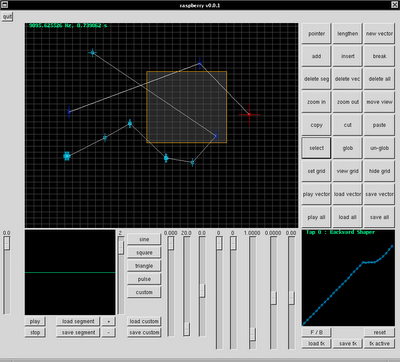Bespoke computing
I was hoping to post this as a reply to a post on Martin Stall's blog. Unfortunately one of the short comings of his blog engine is that comments are limited to 'length 500'.
Martin,
I've been reading your blog for a while and am quite interested in how you tackled this question. As a computer programmer who spends much of his free time creating 'computer art', I'd like to add some thoughts to this discussion.
You ask if a machine can produce anything better than a copy. Lets say, for the time being, that it cannot. However any copy that it makes is immaculate. If I were to purchase a suit from you that I was overjoyed with, would I value having a 100% identical replica of it? Absolutely. I could rotate between wearing the original and the copy and halve the wear on the suit! Or if I were to have a terrible computer related accident and tore my suit irreparably, I would be safe in the knowledge that I had an identical replacement.
However, if someone gave me a 100% identical copy of Vase with Twelve Sunflowers, painted by computer with the exact same strokes, paint and aged canvas, would it be as valuable as the original? Probably not. The owner of the original knows that they have the original and mine is a copy (even if they can't tell the two apart). The value from the work comes from the fact that is was made by the hand of Van Gogh, and no more like it will ever be produced by that hand. Indeed there is value that arises from the physical work (paint + canvas), but the astronomical price is due to the intangible fact that it is unique.
I am not denying that this latter element is not a component of the price of bespoke suits, but I feel that the majority of the price comes from the quality of materials, construction and attention to the unique needs of the client. Imagine the thought experiment: you tailor a suit for me for the price of, lets say, $3000. You see that I am happy with the suit and decide to offer me an identical suit for $2000. The lower price of the second suit due to the fact that you no longer need to make initial measurements or adjustments. Now imagine that I accept your offer and return the next week to pick up these two suits. At this point I can no longer tell that one is 'worth' $3000, whilst the other is merely worth $2000. Because, after handing you $5000 for the pair, they are both worth $2500 to me.
Thus far, your reply has placed the value of a bespoke suit on the art of the tailor in designing an appropriate piece for the client. I am quite happy to accept that modern cutting and sewing technology is currently unable to capture the intricacies of a tailor’s hand. But let us assume that one day this arrives. In which case a tailor could produce the original, and machines could produce duplicates for a single client. Perhaps you may be kind enough to let this technology cope with different fabrics. Even so, a single client would never want more than possibly one or two copies of any single design. Fashions change; bodies accumulate mass and posture and position change. I am not familiar with the breakdown of bespoke suit prices, but if we imagine that 30% goes towards the labor of production (rather than the labor of 'art'), we at best may reduce suit prices by a fraction through duplication.
The real question is to whether technology can ever measure and notice enough about the client to have enough information to make a suit. Following the gathering of information we would need some technology to design the suit -- the creative genius, if you will. Rather than approaching this by tackling the measurement and then the design phase, let me limit my following discussion to the question of whether a computer could design a suit, given suitable measurements. I choose this approach because I am certain that your answer to this would be 'Never!'
My answer is 'Yes!' And the reason why I am so confident in this is that people often forget computers do not run by themselves. Software developers make computer software and software developers are people. And for examples of this I turn to the world of computer art, where artists use software as a medium. They take their aesthetic and use programs as a mode of creative outlet. While the majority of this work is in the graphic mode, artists around the world are writing software to generate music, sculpture, landscapes, etc.
Artistic expression is never limited by the medium. Whilst oils provide one set of opportunities and watercolours provide a different set, no one would say that watercolour is not art whilst oil is. Creative expression can and does flourish in many unexpected places. And there is no reason to think that computer software is not a valid creative outlet. Just as it took centuries for those working with cloth to establish techniques and artistic idioms, computer generated art is evolving and every day practitioners are refining their works.
I strongly believe that computers are capable of design, as they are guided by the hand of people who write the software.
Thanks again for a great blog, and keep cutting!
Josh Reich




